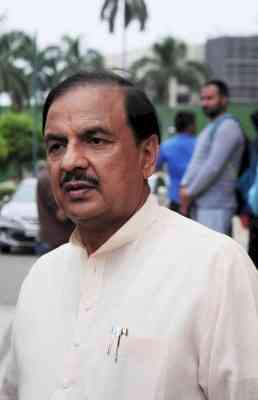FINANCE: Need to earmark separate quota of bank credit to MSMEs
Author(s): PD SharmaMSME sector is the most crucial sector contributing to the country’s exports. The precarious current account situation and balance of trade position require boosting of exports. Of all the borrowers MSME borrowers...


MSME sector is the most crucial sector contributing to the country’s exports. The precarious current account situation and balance of trade position require boosting of exports. Of all the borrowers MSME borrowers are getting the severest treatment by the banks both in the flow of credit and its cost. There has been loud cries from the sector to the Reserve Bank of India and the Finance Ministry to set up a committee to monitor whether such enterprises are benefitting from the directives issued periodically to banks by the RBI but in vein. This sector will further face harsher conditions when other borrowers are getting softer terms of borrowing. Naturally, Bank’s succumb to the pressures of profits and bottom line.
The increasing volume of Non Performing Assets (NPA) and loan structuring is putting pressure on banks. RBI has raised the provisioning requirement for outstanding standard re-structured loans from 2% to 2.75%. This requirement is likely to increase further in a gradual manner to 5% as per the Mahapatra Committee. The current increase will have a marginal impact of 1.4% on the Bank’s profit before tax.
Indian Bank’s Association Committee on house loan has told the Finance Ministry that if the prescribed risks weights on home loans have lowered bank’s will have more funds to lend. This will also enable the banks to reduce the interest rates on home loans. Banks will also be able to give loans upto 85% against 75% now of the value of a house.
If the risk weight on a class of loans is high banks has to back them up with more regulatory capital to take care of the possible delinquencies. The committee has recommended that for 85% loan to value (LTV) ratio and a Rs. 35.00 lacs home loan the risk weightage should be 50%. Currently for 75% LTV and a Rs. 30.00 lacs home loan the risk weightage is 50%. No doubt by boosting the home loan sector the demand for products like iron & steel, Cement, Sanitary ware and electricity cables etc. will increase which will helps the industry. However, by boosting the demands of such products the industrial borrowers should not be squeesed in the matter of credit flow and credit cost.
The regulations require that Banks should lend 40% advances to sectors indentified by RBI as priority sector. Unfortunately, the list of categories within the priority sector is ever increasing.
As a result, MSME sector in particular is getting highly squeezed. It is forced to pay the highest rate of interest and with no easy credit. The competitors are getting credit in the range of 5-6% while our exporters get credit anything around 14%.
Finance Ministry has mandated that 18% credit within priority sector should go to agriculture. The remaining goes to home loan sector and many others and leave the MSME sector open ended. Moreover, there seems to the “D-emphasis” on the export sector. The Foreign banks will no longer have a specific target in the total priority sector towards export credit.
The main reason of charging high interest rates from MSME sector is the highest perceived risk weightage of this sector. In this connection I have been arguing with RBI that borrowers who have given sufficient co-lateral security should have no risk weightatge at all. RBI is beating about the bush on this issue instead of setting up a committee to suggest measures to rationalise the cost of credit and its flow to MSME sector.
RBI and Finance Ministry are urged to earmark separate quota of Bank credit to MSME’s and the rate of interest from the sector should be drastically reduced.
(The author is a Ludhiana - based industrialist and President, Apex Chamber of Commerce and Industry, Punjab.)

 cityairnews
cityairnews 













